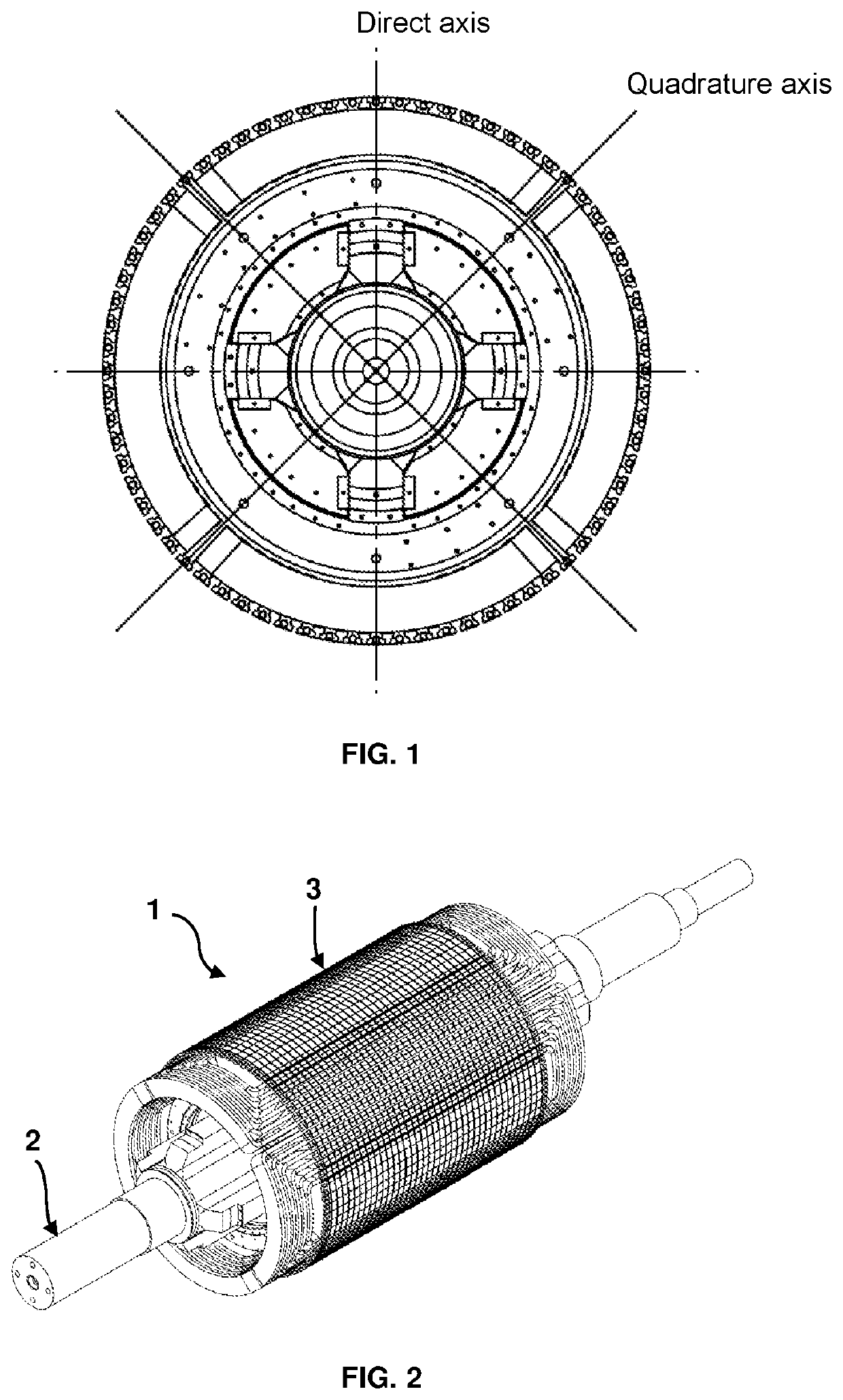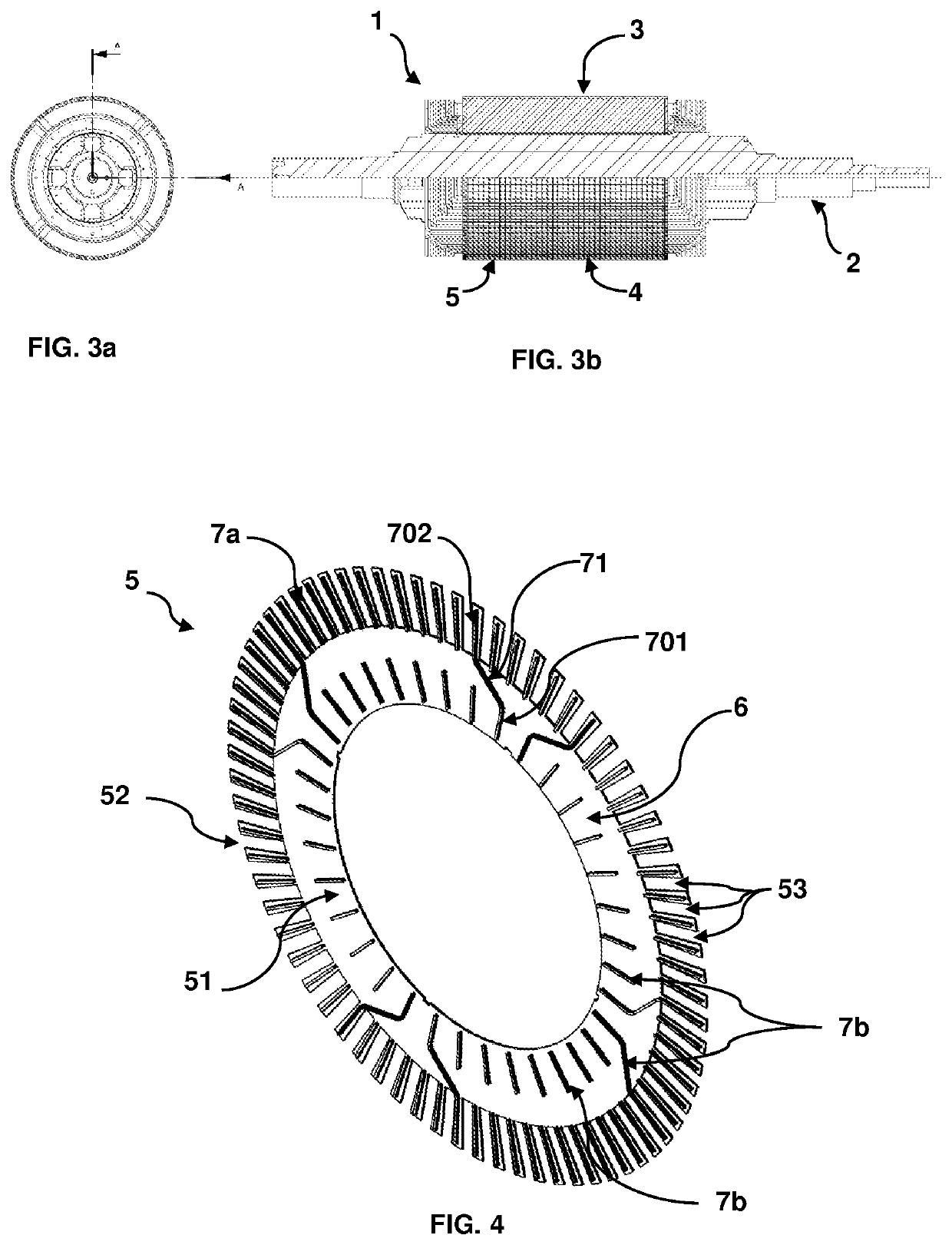Rotor for a rotary electric machine and rotary electric machine
- Summary
- Abstract
- Description
- Claims
- Application Information
AI Technical Summary
Benefits of technology
Problems solved by technology
Method used
Image
Examples
first embodiment
[0048]FIGS. 4 to 6 show the spacer plate (5) according to the present invention.
[0049]As can be seen in this figure, the spacer plate (5) comprises a base plate (6) which comprises a plurality of spacer profiles (7). This base plate (6) may have a simplified geometry when compared to the main plate (4), that is, the cutting geometry of the base plate (6) does not need to be identical to the main plate (4).
[0050]In the same way as in the main plates, although possibly in a simplified geometry, the spacer plate (5) comprises a crown region (51) close to the shaft and a peripheral region (52) with slots (53).
[0051]The spacer profiles (7) may have an arrangement distinct from that presented in the illustrated embodiments of the present invention, and may vary in quantity depending on the variation of the number of slots of the rotor. Furthermore, variation is allowed in both the size and arrangement of the spacer profiles (7) in both the direct axis and the quadrature axis, in the crown...
second embodiment
[0064]Alternatively, in the embodiment shown in FIG. 7, the guiding spacer profile (710) is formed of individual profile portions (711, 712, 713) joined by welding or a similar process. Thus, in this second embodiment of the present invention, there are no profile fold regions. In this configuration, it is necessary that the positioning of the individual profile portions (711, 712, 713) is such that it results in the shortest possible distance d between them.
third embodiment
[0065]FIG. 8 shows the spacer plate according to the present invention, wherein the at least one guiding spacer profile (720) comprises only a first end portion (721) and a second end portion (722).
[0066]Thus, in this embodiment, the first end portion (721) extends, in a straight path, from the crown region (501) of the spacer plate (50) to the second end portion (722) arranged in the peripheral region (502) of the spacer plate (50).
[0067]Preferably, the first end (721) of the guiding profile (720) should be at about 10 mm from the inner edge of the base plate (60), while the second end (721) of the spacer profile (720) should be at an optimal distance of about 5 mm from the outer edge of the base plate (60). The length of the segment formed by the first extended end (721) must correspond to half the total dimension of the crown of the plate (60), and the length of the second end (722) must have a dimension equivalent to the height of the slot (530).
[0068]It is noteworthy that in th...
PUM
 Login to View More
Login to View More Abstract
Description
Claims
Application Information
 Login to View More
Login to View More - R&D
- Intellectual Property
- Life Sciences
- Materials
- Tech Scout
- Unparalleled Data Quality
- Higher Quality Content
- 60% Fewer Hallucinations
Browse by: Latest US Patents, China's latest patents, Technical Efficacy Thesaurus, Application Domain, Technology Topic, Popular Technical Reports.
© 2025 PatSnap. All rights reserved.Legal|Privacy policy|Modern Slavery Act Transparency Statement|Sitemap|About US| Contact US: help@patsnap.com



